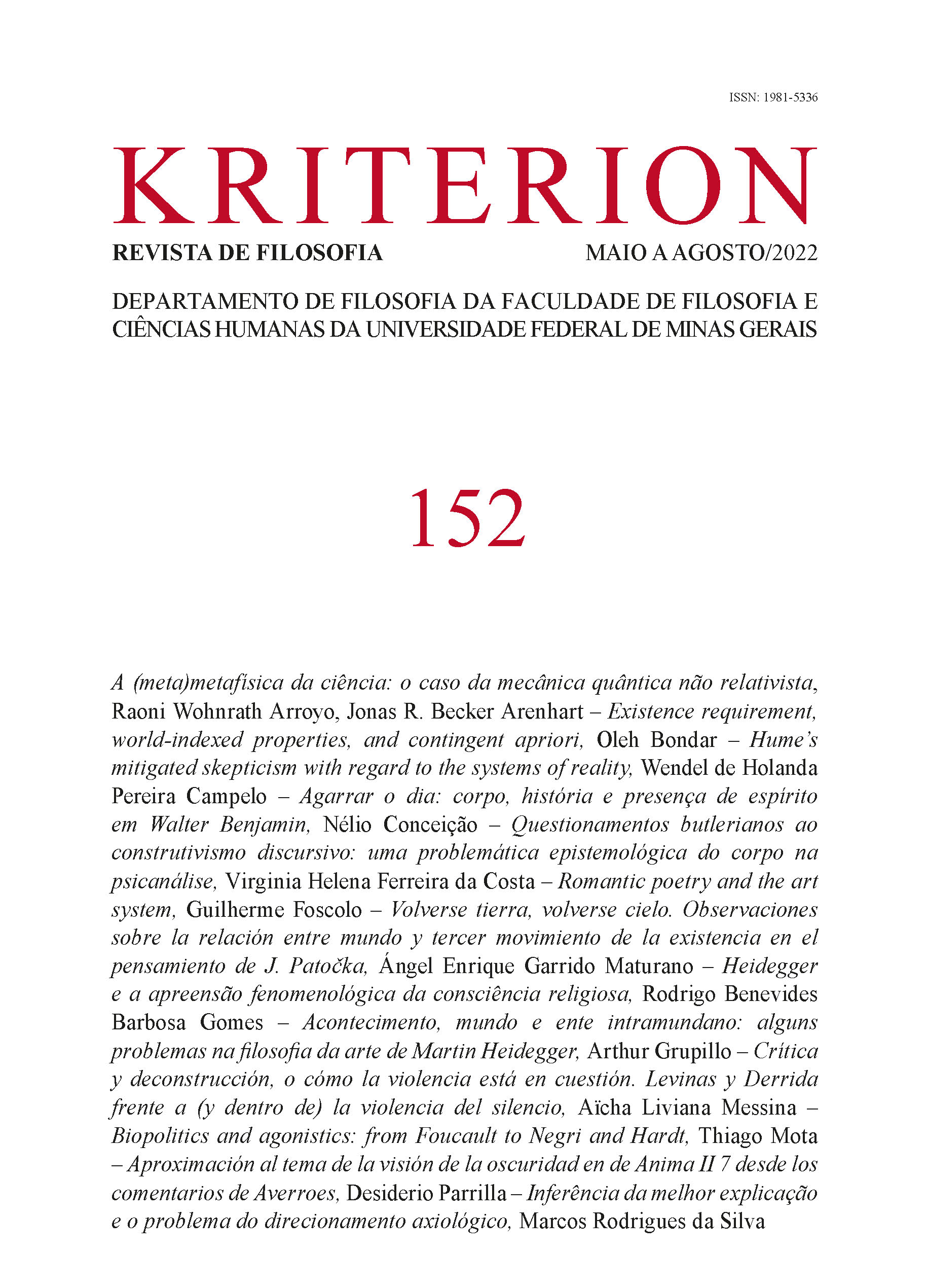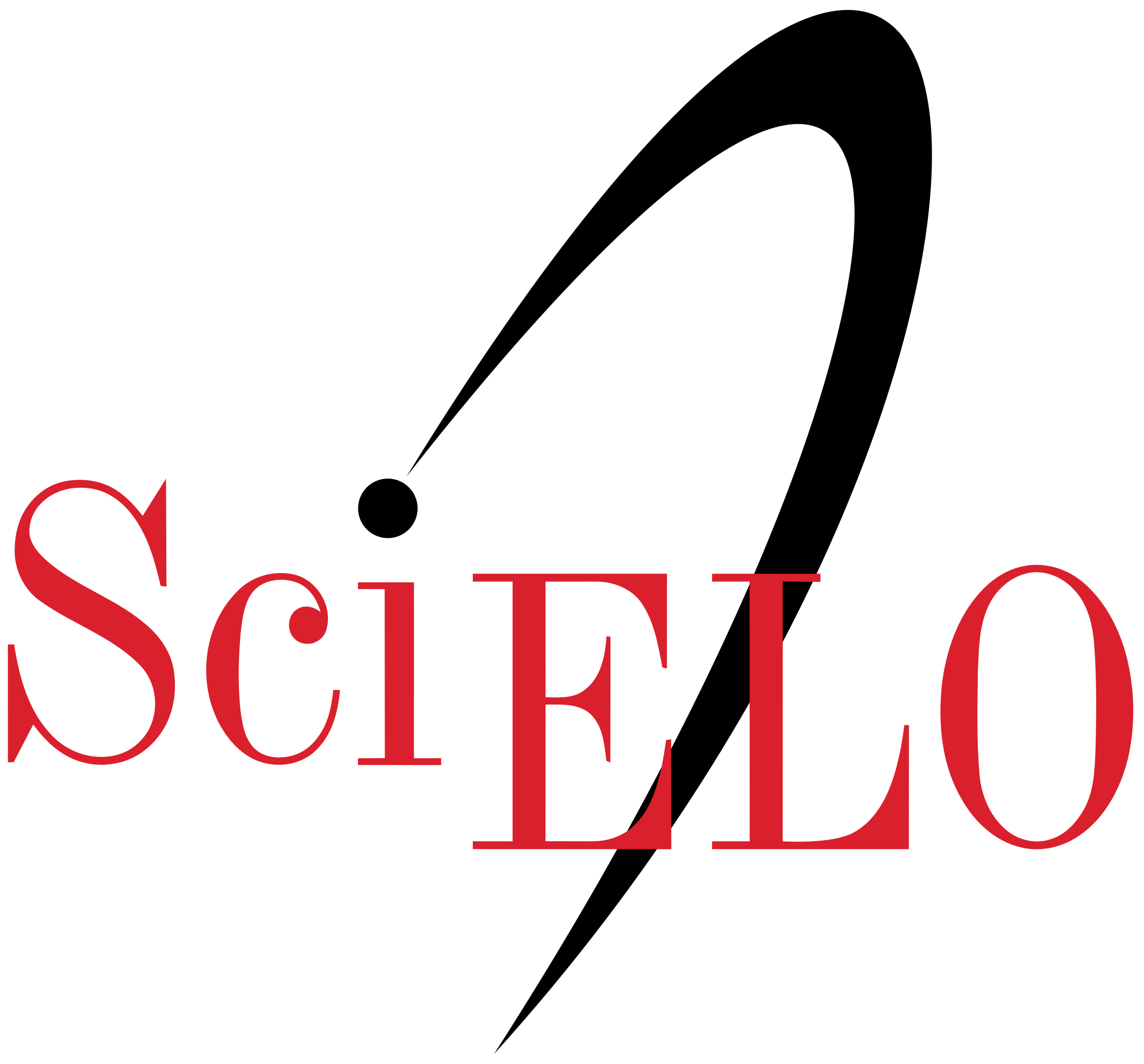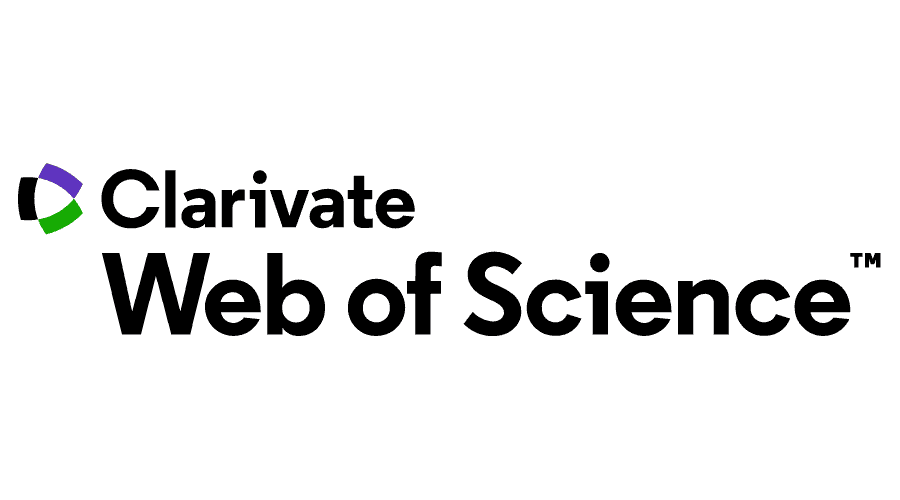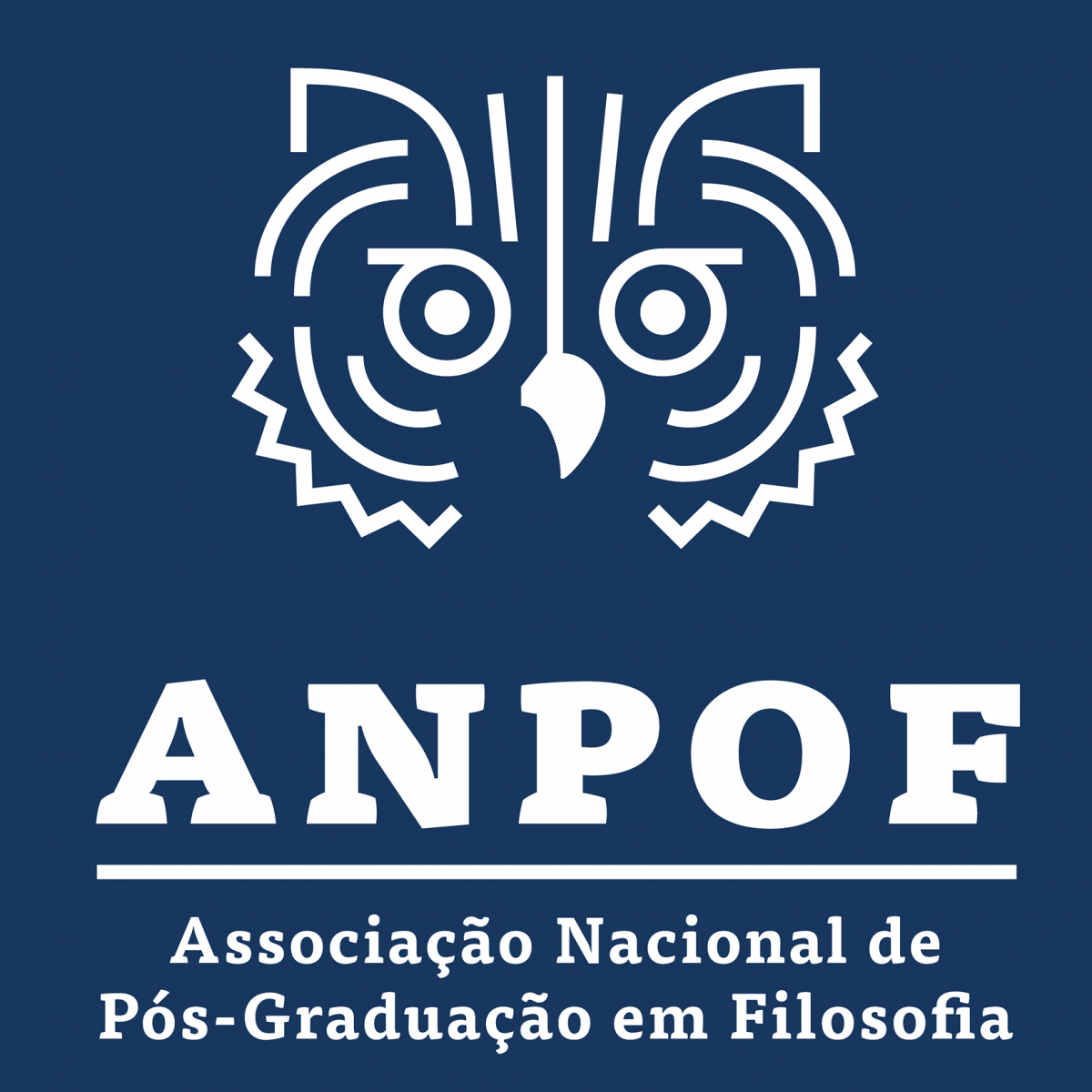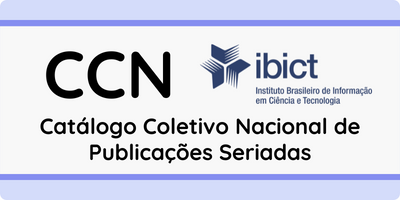ACONTECIMENTO, MUNDO E ENTE INTRAMUNDANO:
ALGUNS PROBLEMAS NA FILOSOFIA DA ARTE DE MARTIN HEIDEGGER
Palavras-chave:
Arte, Heidegger, ente intramundano, Acontecimento, MundoResumo
O objetivo do artigo é caracterizar, tão precisamente quanto possível, a filosofia da arte de Martin Heidegger a partir de seus distanciamentos para, em seguida, delinear um problema que nos parece estrutural. Com a noção de acontecimento [Ereignis], Heidegger pretende distinguir sua perspectiva sobre arte principalmente de outras duas, a saber, a da tradição neokantiana
e a de Hegel. Isso nos permite ter uma dimensão da radicalidade conceitual de Heidegger, na medida em que o acontecimento pretende apontar um momento poético anterior ao linguístico, também compreendido como abertura de um mundo. Esse momento, contudo, escapa às relações de referência previstas na noção de mundo e se torna praticamente indizível. Além disso, a obra de arte
que abre um mundo não deixa também de poder ser identificada como um ente intramundano, enredando, assim, a própria perspectiva de Heidegger em uma série de dificuldades aparentemente incontornáveis.
Referências
ADORNO, Th. W. “Dialética negativa”. Trad. M. A. Casanova. Rio de Janeiro: Zahar, 2009.
_____. “Die Idee der Naturgeschichte”. In: Gesammelte Schriften. Bd 1. Versão digital da edição das obras completas, sob licença da editora Suhrkamp. Berlin: Directmedia, 2003 (Digitale Bibliothek Band 97). (1ª publicação: 1932)
BADIOU, A. “Pequeno manual de inestética”. Trad. M. Appenzeller. São Paulo: Estação Liberdade, 2002.
CASSIRER, E. “A Filosofia das formas simbólicas”. Trad. M. Fleischer. São Paulo: Martins Fontes, 2001. “Deutsches Wörterbuch von Jacob und Wilhelm Grimm”. 16 Bde. in 32 Teilbänden. Leipzig, 1971 [Online]. Disponível em http://woerterbuchnetz.de/cgi-bin/WBNetz/
genFOplus.tcl?sigle=DWB&lemid=GD01827. (Acessado em 13 de junho de 2020.
GALÁN, F.; XOLOCOTZI, A.; GARZA, M. (orgs.). “El futuro de la filosofía”. México: Universidad Iberoamericana, 2004.
GRUPILLO, A. “‘O’ problema da estética: uma reflexão a partir do problema do conhecimento”. Revista Portuguesa de Filosofia, 75, Nr. 4, 2019, pp. 2303–28. Disponível em https://doi.org/10.17990/RPF/2019_75_4_2303.
HABERMAS, J. “Theorie des kommunikativen Handelns”. Frankfurt am Main: Suhrkamp, B. I, 1981.
_____. “Wahrheit und Rechtfertigung”. Frankfurt am Main: Suhrkamp, 1999.
HEGEL, G.W.F. “Ciencia de la Lógica”. Trad. Augusta y R. Mondolfo. Buenos Aires: Solar, 1982.
HEIDEGGER, M. A “Origem da Obra de Arte”. Trad. M. J. Campos. Kriterion. Revista de Filosofia. Belo Horizonte, Nr. 86, 1992. (1ª publicação: 1935)
_____. “Beiträge zur Philosophie (vom Ereignis)”. In: Gesamtausgabe B.65. Frankfurt am Main: Vittorio Klostermann, 1989.
_____. “Conceitos fundamentais da metafísica: mundo, finitude, solidão”. Trad. M. A. Casanova. Rio de Janeiro: Forense Universitária, 2003.
_____. “Contribuições à filosofia (Do acontecimento apropriador)”. Trad. M. A. Casanova. Rio de Janeiro: Via Verita, 2015.
_____. “Der Satz der Indentität”. In: Gesamtausgabe B.11. Frankfurt am Main: Vittorio Klostermann, 2006. (1ª publicação: 1957)
_____. “Der Ursprung des Kunstwerks”. In: Gesamtausgabe Bd. 5. Holzwege. Frankfurt am Main: Vittorio Klostermann, 1976a. (1ª publicação: 1935)
_____. “Die onto-theo-logische Verfassung der Metaphysik”. In: Gesamtausgabe Bd.11, Frankfurt am Main: Vittorio Klostermann, 1976b. (1ª publicação: 1957)
_____. “Hinos de Hölderlin”. Trad. L. Nahodil. Lisboa: Instituto Piaget, 2004.
_____. “Kant und das Problem der Metaphysik”. In: Gesamtausgabe B.3. Frankfurt am Main: Vittorio Klostermann, 1991. (1ª publicação: 1929)
_____. “Nachwort zu »Was ist Metaphysik?«”. In: Gesamtausgabe Bd. 9. Wegmarken. Frankfurt am Main: Vittorio Klostermann, 1976c. (1ª publicação: 1943)
_____. “Nietzsche I”. Trad. M. A. Casanova. Rio de Janeiro: Forense Universitária, 2007.
_____. “Que é Metafísica? Posfácio (1943)”. In: Heidegger. Trad. E. Stein. São Paulo: Nova Cultural, 1996. (1ª publicação: 1943)
_____. “Sein und Zeit”. Tübingen: Max Niemeyer Verlag, 1967. (1ª publicação: 1927)
_____. “Ser e Tempo”. Trad. M. S. Cavalcante. Petrópolis: Vozes, 1999. (1ª publicação: 1927)
_____. “Vom Wesen der Wahrheit”. In: Gesamtausgabe Bd. 9. Wegmarken. Frankfurt am Main: Vittorio Klostermann, 1976d. (1ª publicação: 1949)
_____. “Vom Wesen des Grundes”. In: Gesamtausgabe Bd. 9. Wegmarken. Frankfurt am Main: Vittorio Klostermann, 1976e. (1ª publicação: 1929)
HERRMANN, F-W v. “Heideggers Philosophie der Kunst. Eine systematische Interpretation der Holzwege-Abhandlung „Der Ursprung des Kunstwerks“.” Frankfurt am Main: Vittorio Klostermann, 1980.
LAFONT, C. “El problema de la apertura lingüística del mundo en la filosofía hermenéutica y analítica”. In: Galán, F., Xolocotzi, A., Garza, M. (orgs.), 2004, pp. 137-166.
_____. “Sprache und Welterschlieβung. Zur linguistischen Wende der Hermeneutik Heideggers”. Frankfurt am Main: Suhrkamp, 1994.
MOOSBURGER, L. B. ““A Origem da Obra de Arte de Martin Heidegger”: Tradução, Comentário e Notas”. Dissertação (Mestrado em Filosofia) – Setor de Ciências Humanas, Letras e Artes, Universidade Federal do Paraná, Curitiba, 2007.
PÖGGELER, O. “Der Denkweg Martin Heideggers”. Tübingen: Neske, 1963.
SAFRANKI, R. “Heidegger: um mestre da Alemanha entre o bem e o mal”. Trad. L. Luft. São Paulo: Geração Editorial, 2000.
WELLMER, A. “Zur Dialektik von Moderne und Postmoderne. Vernunftkritik nach Adorno”. Frankfurt am Main: Suhrkamp, 1985.
WERLE, M. “Poesia e Pensamento em Hölderlin e Heidegger”. São Paulo: Unesp, 2005.
WITTGENSTEIN, L. “Über Gewissheit – On Certainty”. Oxford: Blackwell Publishing, 2008.
Downloads
Publicado
Edição
Seção
Licença
Copyright (c) 2022 Revista Kriterion

Este trabalho está licenciado sob uma licença Creative Commons Attribution 4.0 International License.

